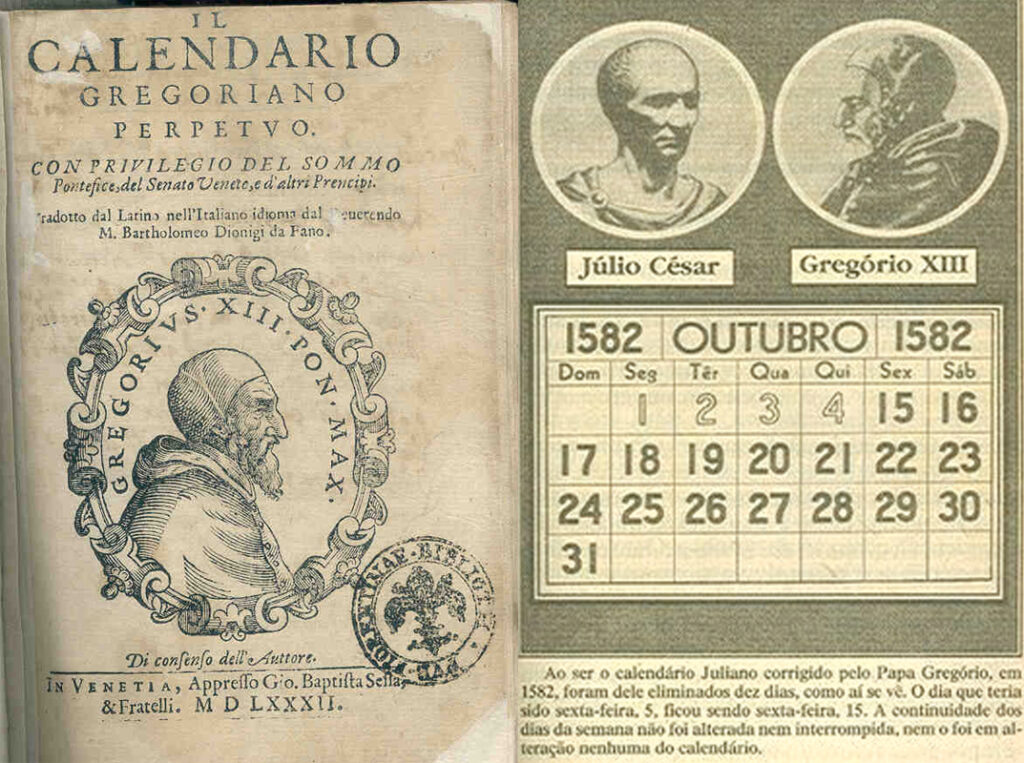In 1582, the world experienced one of the most significant changes in its timekeeping history with the adoption of the Gregorian calendar. This reform, initiated by Pope Gregory XIII, aimed to correct inaccuracies in the Julian calendar, which had been in use since 45 BCE. One of the most remarkable aspects of this transition was the loss of 10 days in October 1582. This article delves into the reasons behind this drastic change and its impact on society.
The Flaws of the Julian Calendar
The Julian calendar, introduced by Julius Caesar, was a revolutionary reform in its time. It set the year length to 365.25 days, accounting for an extra day every four years to create a leap year. However, this calculation was slightly inaccurate; the actual solar year is approximately 365.2425 days. This small discrepancy of about 11 minutes per year accumulated over centuries, causing the calendar to drift out of sync with the seasons.
By the 16th century, the difference had grown to about 10 days. This misalignment was particularly problematic for the Christian Church, as it affected the timing of Easter, which was traditionally celebrated on the first Sunday after the first full moon following the vernal equinox. The vernal equinox was supposed to occur around March 21, but due to the Julian calendar’s inaccuracies, it was gradually shifting earlier in the calendar year.
Pope Gregory XIII’s Solution
To address this issue, Pope Gregory XIII convened a commission of astronomers and mathematicians, including the renowned Christopher Clavius. After extensive study, they proposed a new calendar system that would correct the drift. The Gregorian calendar, named after the Pope, introduced several key changes:
- Leap Year Adjustment: The Gregorian calendar retained the concept of a leap year but modified the rules. Under the new system, a year is a leap year if it is divisible by 4. However, if it is divisible by 100, it is not a leap year unless it is also divisible by 400. This adjustment corrected the overestimation of leap years in the Julian calendar.
- Immediate Realignment: To realign the calendar with the solar year and the seasons, Pope Gregory XIII decreed that the day after October 4, 1582, would be October 15, 1582. This adjustment effectively removed 10 days from the calendar, bringing the vernal equinox back to its intended date.
Implementing the Reform
The implementation of the Gregorian calendar reform was not uniform across all countries. Catholic countries such as Italy, Spain, and Portugal adopted the new calendar immediately in 1582. However, Protestant and Orthodox countries were more resistant, viewing the reform as a Catholic imposition. As a result, the adoption of the Gregorian calendar spread gradually over the next few centuries.
For instance, England and its colonies, including what would become the United States, did not adopt the Gregorian calendar until 1752, by which time the discrepancy had grown to 11 days. Russia held out even longer, not making the switch until after the Bolshevik Revolution in 1917. Greece was the last European country to adopt the Gregorian calendar, doing so in 1923.
The Impact of the Reform
The removal of 10 days in October 1582 had significant short-term and long-term effects. In the immediate aftermath, there was widespread confusion and concern. People were worried about losing 10 days of their lives, and there were practical issues such as adjusting rent and interest payments. However, the long-term benefits of the reform far outweighed these initial inconveniences.
The Gregorian calendar provided a more accurate and reliable way of measuring time, ensuring that the seasons and important religious dates remained consistent year after year. This consistency was crucial for agricultural societies that relied on accurate seasonal timing for planting and harvesting crops.
Conclusion
The 1582 calendar reform, marked by the sudden loss of 10 days in October, was a pivotal moment in the history of timekeeping. The transition from the Julian to the Gregorian calendar corrected centuries of drift and brought the calendar year back in line with the solar year. While the immediate impact was disorienting for many, the long-term benefits of a more accurate calendar system have proven invaluable. Today, the Gregorian calendar is the most widely used civil calendar in the world, a testament to the enduring success of Pope Gregory XIII’s reform.



